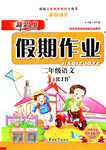题目内容
Students’ Insurance
What Is Covered under Contents?
Under the “Contents” section your possessions---which you do not have to be listed--will be protected on a “new-for-old ” basis where items will be replaced as new--regardless of their age or condition.
“Contents” include books,radios,audio and video players,TVs,jewellery,home computers,furniture,household goods,other electrical equipment and sports equipment. They will be insured as follows:
---Theft
---Fire,Lighting,Explosion
---Malicious Damage(恶意破坏所造成的损失)
---Storm,Flood and other natural disasters
But new-for-old cover does not include clothing and linen.
Where Does Cover Apply?
Anywhere in Australia whether in∶
---Your
---Your Parents’ Home or Any Temporary Residence---where you are staying when away from College
---Your College or Students’ Union Building
---College Storage during Vacations
Plus The Following Benefits Included Free
Loss or Damage to:
---Gas, water and electricity meters and telephones--- up to$300
---TVs and videos rented in your name
---Library books---up to$300
---Daily things bought---up to$500 as to cover described under “Contents”
---College or Landlord’s Possessions in your room(s)---by Fire or Theft--if you are legally responsible---up to$2,000
---Personal Money---from your room---up to$60 PLUS fraudulent(欺诈的)use of your Credit Card---up to$1,000
64. If you lose an old video player, the insurance company will .
A. pay you up to$300 in insurance B. pay you nothing for it is old
C. replace it with a new one D. replace it with a used one
65. Which description do you think makes sense according to the passage?
A. Your household goods will not be insured due to natura1 disasters.
B. You can be paid$2,000 for fraudulent use of your Credit Card.
C. Your computer is insured when you are away from co11ege.
D. Your rented car is completely insured if you have it damaged.
66.Which of the following doesn’t belong to the insurance project?
A. Audio and video players, TVs. B. Jewellery, home computers.
C. Furniture, library books. D. Clothing, linen and cars.
67. We can infer from the passage that .
A. if you lose a radio you can get another one
B. if your jewellery is stolen you can get as much as$300
C. if a fire breaks out in your room you can get everything back
D. if your possessions are stolen outside

 新思维寒假作业系列答案
新思维寒假作业系列答案请认真阅读下列短文,并根据所读内容在文章后表格中的空格里填人最恰当的单词。
注意:每空格1个单词。
Quality after-school programs are designed to improve academic performance, decrease youth crimes and other high-risk behaviors, and help young people grow into healthy, successful adults.
The effect of quality after-school programs on academic performance is clear. Studies show that students who take part in such programs show better work habits, higher rates of homework completion, improved grades, and higher scores on achievement tests. They also have fewer absences and are less likely to blame. After-school programs also influence high-risk teen behavior. Various studies show decreased rates of crime, drug-taking, and teen sex among youth who join in well-run after-school programs when compared to similar youth who do not. Finally, after-school programs play an important role in supporting different kinds of fields of development: physical development, mental development and social development. Thus, one can safely say that after-school programming is an effective method to help young people become contributing members of society.
Although there is enough proof from both small and large assessments that after-school programs can make a positive difference, it is important to note that not all programs are equal. First, dosage matters -- young people who attend the most hours over the most years benefit more than members who attend less often or over a shorter period of time. Next, after-school programs make a bigger difference for those students who need help most and have the fewest choices. Finally, program qualities matter. After-school programs work best when they create unique opportunities for youth. They should provide opportunities, skill building meaningful involvement, expression, suggestion, service, and work. Staff characteristics make an important difference in the quality of a program. The adults should treat youth as partners, create safe and fair environment, encourage personalized involvement, and actively create learning opportunities. In short, although after-school programs have a promising future, how they are designed and run matters.
Title: Quality After-school Programs
| Purpose | 1. academic performance 2. Decreasing youth crimes and other high-risk behaviors 3. Helping young people grow into healthy, successful adults | |
| Effects | 1. Improved academic performance ● better work ● higher rates of homework completion ● improved grades and higher scores ● fewer absences and blame | Helping young people become members making a contribution to |
| 2. Decreased high-risk teen behaviors ● decreased rates of crime ●drug ● teen sex among youth | ||
| 3. Various development ● development ● mental development ● social development | ||
| Factor | 1. Dosage matters. 2. matter. 3. Qualities matter. | |
|
| The future of after-school programs is promising, how to design and run the programs is very . | |